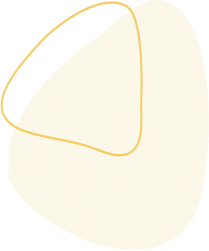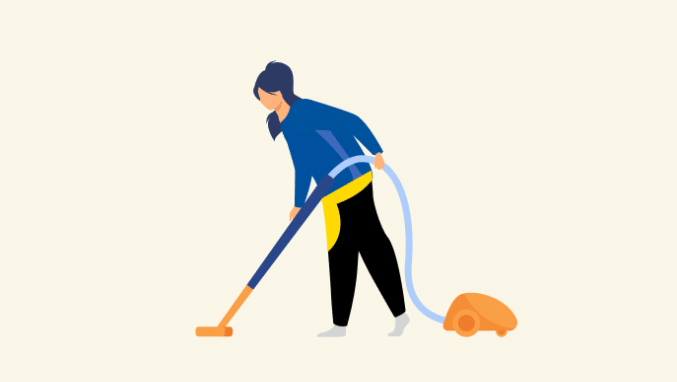Request An Estimate
Isn’t outdoor furniture designed to withstand the elements? Why should I worry about learning how to clean outdoor furniture? Good questions! Yes, outdoor furniture is designed and constructed differently than indoor furniture so it can last season after season in outdoor conditions. But, just like any other outdoor items, that “outdoor” construction can only withstand so much. From patio furniture to outdoor decorations, you want your outdoor space to be beautiful and functional. Protect and clean outdoor furniture to keep it looking good as new summer after summer.
Weather Can Damage Outdoor Furniture Materials in Different Ways
UV rays can fade fabric and furniture frames and heat can melt and fade plastics and break down fabrics. Rain and moisture can cause wrought iron and other metals to rust, fabric pillows and cushions to develop mold and break down the finish on wood. Cushion and pillow foam can break down from prolonged heat and get moldy from moisture. If you’re shopping for outdoor furniture, put some thought into where the furniture will be located and how vulnerable it will be to the elements.
When you know how to clean outdoor furniture and protect it, your patio furniture should last for many years. Wooden outdoor furniture is beautiful and more natural-looking, but it can require ongoing maintenance. Less expensive wood like pine or oak can hold up nicely if it is protected with a good stain and sealant, but it may eventually warp, crack and decompose more quickly than some other woods. Although more expensive than pine or oak, teak, mahogany and redwood may be a better choice. These types of wood are naturally hardy and can withstand the elements with a minimal amount of maintenance.
Metal like wrought iron is durable, but it does require some protection and maintenance. You can touch up most metal with a bit of sanding and a fresh coat of paint, but once rust forms, you must stay on top of your maintenance to keep the metal from corroding. A better choice for metal outdoor furniture is aluminum. Powder-coated aluminum looks great and is very weather resistant. The coating is virtually scratch-proof and keeps the furniture safe from rust and UV damage.
Plastic and resin furniture is inexpensive and comes in a wide variety of styles, making it one of the most popular choices for deck and lawn furniture. Plastic furniture is low maintenance but is still susceptible to fading and cracking from UV rays and prone to discoloration and permanent stains.
Cleaning Tips for Outdoor Furniture
Expensive or inexpensive, high-maintenance or low-maintenance, regardless of their materials, you’ll want to protect and clean outdoor furniture to make it last longer. From spills to dirt and grime, outdoor furniture can get pretty dirty from season to season. Knowing how to clean patio furniture before, during, and after summer goes a long way toward extending the life of wood, metal, and fabric materials.
Even modern outdoor fabrics like polyester will stain, and the commonly used quick-dry foam could break down if you don’t clean up spills and messes when they happen. Natural and synthetic fabrics react differently to cleaners, so unless the manufacturer suggests something different, clean your outdoor fabrics with good old soap and water. The key for any fabric will be to clean up those spills as quickly as possible. If you have covers that can be removed, just take them off and throw them in the washer. Be sure to clean the foam inside quickly and let it air dry to prevent mold and mildew.
For metal outdoor furniture like wrought iron, soap and water will work fine. Be careful not to scrub too hard and create chips in the finish to avoid rust. Plastic or resin outdoor furniture is easy to keep clean if you wipe up spills right away and give it a good cleaning once in a while. Avoid abrasive cleaners that could scratch the surface and opt for an all-purpose cleaner instead. You can spray down plastic furniture with a hose when it’s really dirty and then wipe it down with your cleaner and a sponge or cloth.
While it’s tempting to grab your pressure washer to clean wicker, teak or other wood outdoor furniture quickly, the strong spray could scar or damage your beautiful furniture. Instead, use mild oil soap or soap and water and a soft brush or sponge to remove dirt and grime gently. You may find a toothbrush helps to get into the nooks and crannies of wicker easier. For hardwoods like teak or redwood, there are plenty of commercial cleaning products designed to clean and protect but avoid teak oil because it can encourage mildew.
No matter what type of outdoor furniture you have, be sure to protect and clean outdoor furniture and let it dry thoroughly before you put it in storage at the end of the season. Even when it’s stored away from the elements, it’s a good idea to give your outdoor furniture a quick cleaning at the beginning of summer, too.
How to Protect Your Outdoor Furniture from the Elements
Knowing how to clean outdoor furniture is great, but you also need to know how to prevent damage from the sun’s UV rays and moisture. Fabric umbrellas not only keep your family cool, but they also offer protection from the sun for your outdoor furniture. A patio cover or awning will give your furniture even more protection from the sun and rain. Although it can be more work, outdoor furniture covers offer almost complete protection from the elements, just be sure to not leave them on too long to avoid mold and mildew.
For most wood outdoor furniture, the type of wood and the finish will be the most critical deterrents to damage from the sun and rain. Paint is a good way to protect against moisture and UV rays but covers up the natural grain. You’ll need to reapply paint once in a while to cover up fading, chipping and peeling. If you want to keep the natural look of wood, a water sealer is ideal for keeping moisture out. Varnish is another good wood outdoor furniture protector and only requires a fresh coat every couple of years in most conditions.
Outdoor furniture made from metal is susceptible to corrosion. Other than keeping it clean and choosing pieces with a “weather resistant” finish, there are things you can do to keep wrought iron and other metals looking fresh and new. To repel water and prolong the life of the finish, periodically applying car wax will create a protective coating and prevent rust. Any moving parts should be greased regularly to limit metal to metal wear and keep out moisture. For chips and scratches down to the metal, rub the area with fine steel wool, apply a rust-inhibiting primer, apply paint and finish with a top coat of wax or sealer.
Additionally, if your fabrics aren’t treated by the manufacturer to deter damage from UV rays and moisture, you’ll want to apply your own protective fabric guard. Reapply the fabric guard any time you see your cushions and pillows retaining moisture. Be sure the fabric is clean and dry before you spray it. If your cushions and pillows are dirty, you need to know how to clean outdoor cushions before you apply any protectants.
How to Clean Outdoor Cushions
For pillows and cushions, the most durable are constructed with quick-dry foam and a polyester or acrylic outer fabric. These fabrics are less likely to fade from rain and UV rays than some other fabrics, resist shrinking and stretching and require very little maintenance. Learning how to clean outdoor cushions is pretty straightforward—it’s making it a regular routine that can be a challenge.
When you know how to clean patio cushions, you can keep them looking newer longer for years. Before we get into how to wash outdoor cushions, go ahead and put the task on your spring and fall cleaning checklist. Now, on to the outdoor cushion cleaning.
Vacuum Your Patio Cushions
Shake your cushions to remove dust and dirt and then vacuum all sides of the patio cushion with your vacuum’s upholstery tool. It’s best to vacuum your cushion covers while they are still on the cushions so you can get into tufts and other tight places.
Remove the Outdoor Cushion Covers
Remove your outdoor cushion covers and vacuum the foam on all sides gently to remove debris. If possible, put your patio cushions out in the sun for some natural disinfecting and to dry any moisture.
Wash Your Cushion Covers
Learning how to wash outdoor cushions is easy. If the fabric care label allows for machine washing, head to the laundry room with your cushion covers and follow the directions on the label. To hand-wash your cushion covers, follow these simple steps:
- Hand-wash the cushion covers in a sink of water and dish soap and use ¼ cup baking soda for stains and mildew
- Let the covers soak for 15 minutes
- Pile your wet cushion covers into a bucket and head outside
- Gently rinse the covers with a garden hose
- Roll the covers up in towels to remove some of the moisture, then lay them out to air dry
- Once your outdoor cushion covers are nice and dry, put them back on your cushions and spray them with a fabric protector to keep them looking their best. Even using the best fabric protector only goes so far against foul weather and glaring sunlight. If possible, store your cushions out of the weather when you’re not using them and they will experience less fading and wear.
Now that you know how to clean outdoor furniture and protect it, be sure to check out our other cleaning guides. Whether you are a DIYer or you invest in one of our popular residential cleaning services, The Maids wants your family to enjoy a cleaner, healthier home. Learn more about our healthy approach to cleaning with a free estimate from The Maids today!
Request An Estimate










